by Dr Noratat Prachom, King Mongkut’s Institute of Technology Ladkrabang (KMITL), Thailand, Prof Dr Simon J. Davies Harper Adams University, United Kingdom & Dr Henk-Maarten Laane, Rexil Agro BV, The Netherlands
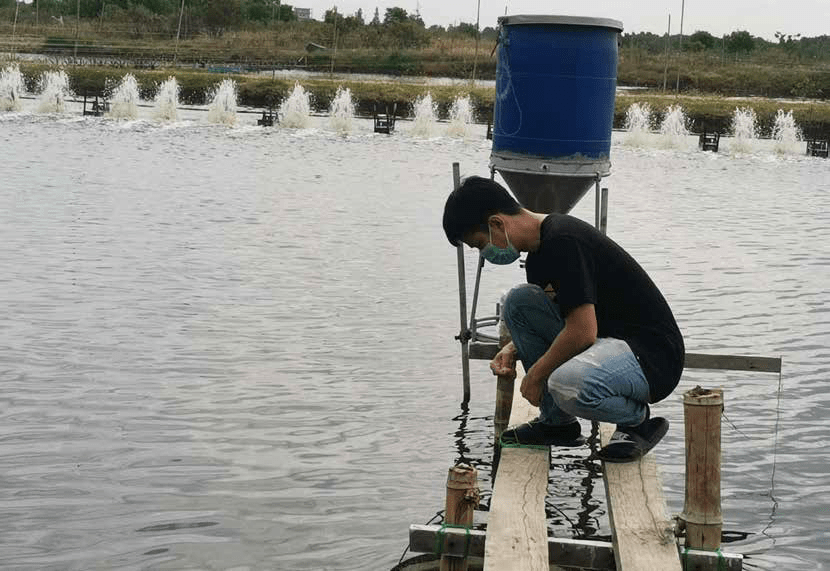
As aquaculture expands globally with a total annual production that now provides more than 50 percent of total seafood contribution per year, there is growing pressure to meet this demand sustainably.
Total global aquaculture seafood production reached over 86 million tons in 2019, and was valued at US$180.2 billion in the same year, with production anticipated to reach US$224.2 billion by 2022. The shrimp sector alone was worth US$39.24 billion in 2019 which is projected to attain US$54.6 billion by 2027, with a CAGR of 9.2 percent from 2022 to 2027.
Shrimp is a core species and is a large sector of the industry and highly profitable. It is therefore imperative that production of shrimp is environmentally sustainable. Much effort is being directed to improve feed quality and meeting criteria concerning the health and welfare of farmed shrimp and more notably strategies to combat established and emergent diseases that have significantly constrained production in many regions of the world.
One of the most important areas is the use of prophylactic measures involving natural biological and mineral compounds that can augment and stabilise the aqueous environment and act favourably to enhance optimum conditions for shrimp farming. Various clays and earth metals have distinct properties of use in aquaculture practice and silicon is one such element. These may become rate limiting and essential under many conditions throughout the world for aquatic production.
Amongst the many silicon compounds, only (patented) stabilised silicic acid (bioavailable silicon) is both bioavailable and bioactive for all life forms on Earth. Silicic acid molecules are water-soluble and easily absorbed by almost any animal including fish and shrimp. Mono-silicic acid, the only bioavailable silicon compound, is a limiting factor in the growth of all aquatic organisms.
Because silicic acid is a very unstable compound, the concentration of this bioactive silicic acid is (too) low. As soon as extra stabilised silicic acid is added to ponds or lakes, all aquatic life will profit: the increased silicic acid concentration stimulates diatoms as well as other related phytoplanktonic organisms and algae, which in their turn causes a bloom in organisms that consume them in the food chain.
It has been shown that in rearing ponds for intensive production, due to the higher growth rate of diatoms, the water quality will improve as well as many toxic metabolites being mitigated as density increases within optimum concentrations of biofloc generation with the presence of bioavailable silicic acid.
One such commercial product SiliFish® (patented bioavailable silicic acid with micronutrients) is used for stimulation of aquatic life including diatoms and resulting in a higher growth rate together with better health for farmed aquatic animals such as shrimp and fish.
This silicic acid technology is based on stabilised silicic acid formulation, with amongst others small silicic acid molecules, a technology being used in the last decades for agriculture with impressive results on yield and quality.
An overview of applications of stabilised silicic acid has been described by Laane (2016) for plants. This is equally relevant to aquatic plant life including algae, diatoms and even protists dependent on silicon in their metabolic processes.
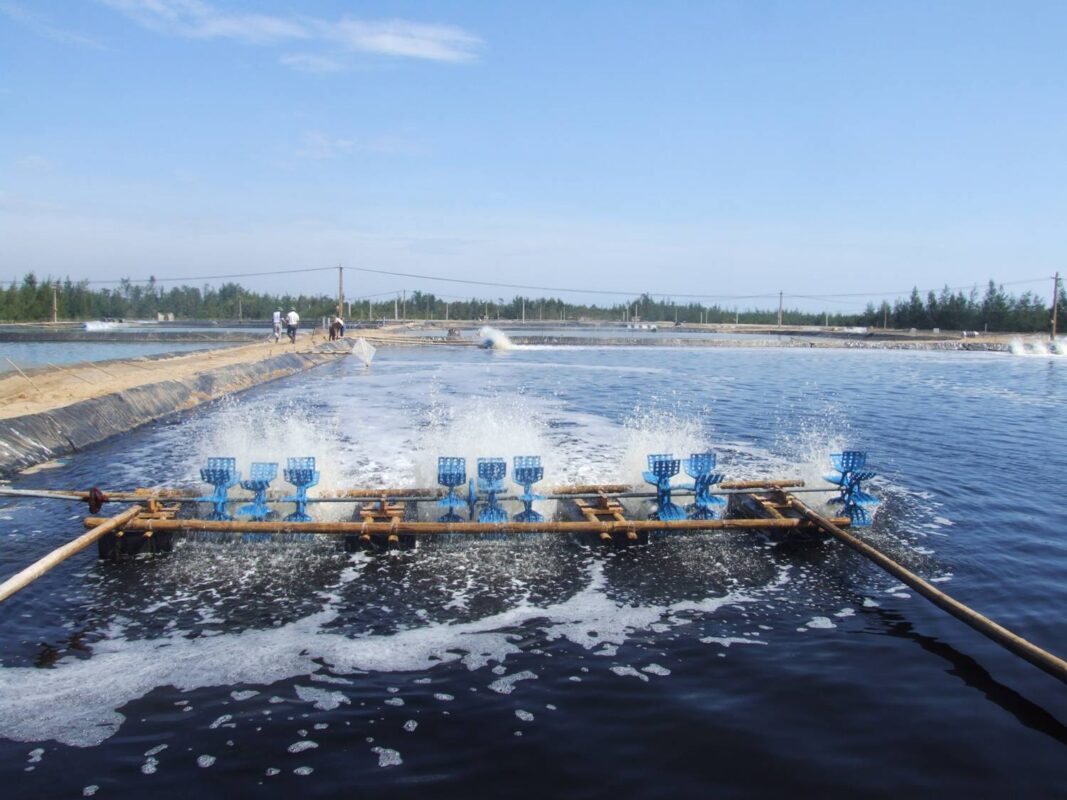
Supporting the immune system
This new technology developed for use in shrimp and fish hatcheries, nurseries and grow-out farms have many other attributes. It may also support directly or indirectly the immune system and would effectively create ‘robust’ shrimp. It is imperative that we achieve resilient shrimp in the coming decades where bacterial and viral diseases create immense global problems and where specific pathogens, and epidemics can rise.
These offer a new opportunity for the global aquaculture Industry and human food security using natural supplements and additives for intensive production scenarios. There are obvious benefits for sustainable primary and secondary yields creating stable trophic food webs in rearing systems (Davies, 2020).
The product has been proved effective in freshwater and brackish water, tanks, ponds, and lakes in several countries. Over 20 different trials conducted in India from 2017 to 2021 have demonstrated excellent performance in shrimp ponds treated with the product SiliFish®.
In 2021, trials undertaken in Vietnam in three different locations, produced the same outcome. It was observed that significant effects attaining optimal pH to mitigate alkalinity, stabilisation for elevated and consistent dissolved oxygen (6.5 ppm), considerable reductions in ammonia from 2.7 to 0.38 ppm was achievable. Superior performance in shrimp yield (+20%), mean live weight (+13.5%) and a reduction in FCR from 1.68 to 1.41 was recorded during a 135-day culture period under farm conditions.
Since 2016-18, the application of stabilised silicic acid with micronutrients showed increased yields in aquaculture trials. Between 15-26% improvement in yields and 17-35 percent increases in the survival rate were recorded within intensive aquaculture conditions. The zooplankton and phytoplankton levels were improved substantially, the dissolved oxygen level was elevated, and the pH values were optimised in the rearing systems with much reduced soluble nitrogen compound concentrations.
The principal research objective of this study is to evaluate the effect of the SiliFish® silicic acid application on the growth performance of Litopenaeus vannamei during a hatchery period (30-60 days), nursing period (20–30 days) and grow-out period of 56 days to cover critical phases.
The study examined several key parameters relevant to the farmer and zootechnical indices defining efficacy and feed utilisation as well as whole-body composition. The latter reflects nutrient assimilation efficiency and net gain.
Two selected concentrations of SiliFish® (zero and concentration as recommended) were used in a hatchery (Governmental hatchery, Samutsakorn province, Thailand), nursing and grow-out period at GAP certified private shrimp farm, Nakorn Pathom province, Thailand.
The recommended concentrations used were 30ml per 100,000-litres water (hundred thousand litres). This equated to 0.5ml per m3 (1000 litres in the pond/lake under circulation by pumping.
In practice, for a pond of one million litres: five bucket applications with water mixed with 300ml SiliFish® product were distributed at different places in the pond at two-week intervals.
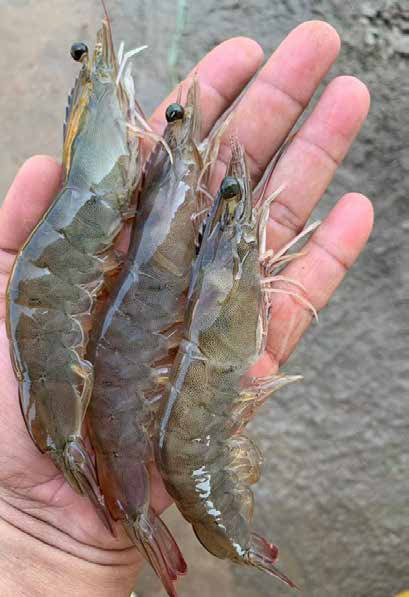
EARTHEN POND TRIAL
Part 1: Grow-out period and management
An 8-week growth study on Pacific Whiteleg shrimp (1.0 g/shrimp) in duplicate was conducted in a 3,200 m2 earthen pond (100,000 shrimps per 1,600 m2 ) at the GAP certified private shrimp farm, Nakhon Pathom province, Thailand. Nakhon Pathom is one of the central provinces of Thailand. The pond size was 2 Rai (1 Rai is 1,600 m2 ). Stocking density is 100,000 shrimps / 1 Rai.
Shrimp (Litopenaeus vannamei) were fed by automatic feeder four times a day according to the farming standard. The feed was obtained from the Phoka Feed Mill Co., Ltd., Thailand (284/1 Moo 1 Mueang Nakhon Pathom, Nakhon Pathom, 73000 Thailand). The bespoke shrimp feed specification was Crude Protein 38%, Crude Fat 7% and diet pellet sizes of 1.5 mm; 2.0 mm; 2.5 mm that were assigned across the trial period to optimise maximum intake.
At the end of grow-out period, shrimp were sampled for the growth and feed utilisation metrics. Water quality parameters were measured three times daily. At the end of the trial, shrimps were assessed for the growth performance and immune response status as described below.
Part 2: Growth and feed utilisation parameters
Growth performance and feed utilisation parameters were as listed below:
- Survival rate (%)
- Final body weight (FW): Total biomass
- Body weight gain (WG)
- Feed consumption rate (FI): Total feed used
- Feed conversion ratio (FCR)
- Average daily gain (ADG)
- Specific growth rate (SGR)
Protein efficiency ratio (PER)
The trial operated under the optimum parameters and water quality criteria for L. Vannamei according to the available scientific literature as listed below and monitored daily at the farm facilities. Water parameters conformed to the optimum profile for shrimp production as measured daily with the following average values:
- Dissolved Oxygen (DO) 6.8-7.0 mg O2 /L
- pH 6.8-7.0
- Water temperature (degrees Celsius) 29.0-30.0º C
- Alkalinity 150 mg/L
- Ammonium, nitrate, and nitrite <0.1mg/L
- Salinity (in farm used, standard 5 ppt.). Measured average Salinity 4 ppt.
A very significant elevation in total biomass
We report integrative results and discussion that comprehensively describes the trial to evaluate the effect of a propriety product namely stabilised silicic acid (SiliFish®) on the growth and feed utilisation of Litopenaeus vannamei under experimental pond conditions.
A specific farm was located for the trial with GAP certification (Good Aquaculture Practice) compliant with high standards of husbandry, care, welfare, and hygiene status. The private farm was situated at the Nakorn Pathom province, Thailand.
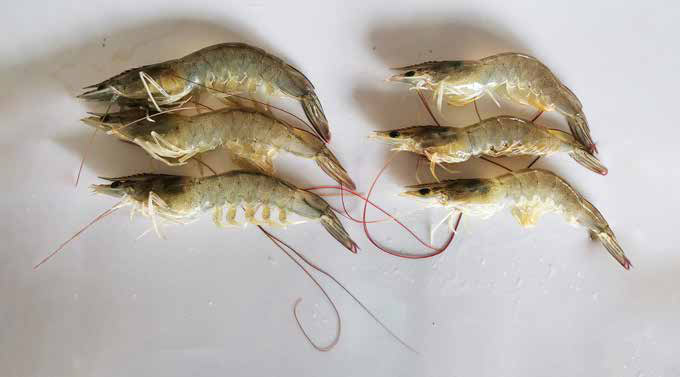
Photo 3: Image of shrimp Litopenaeus vannamei sampled on termination of the growth trial (8-weeks) evaluation. On the right (control group) at an average weight of 9.48g on the left shrimp (exposed to silicic acid, SiliFish®) attaining 12.49g mean weight.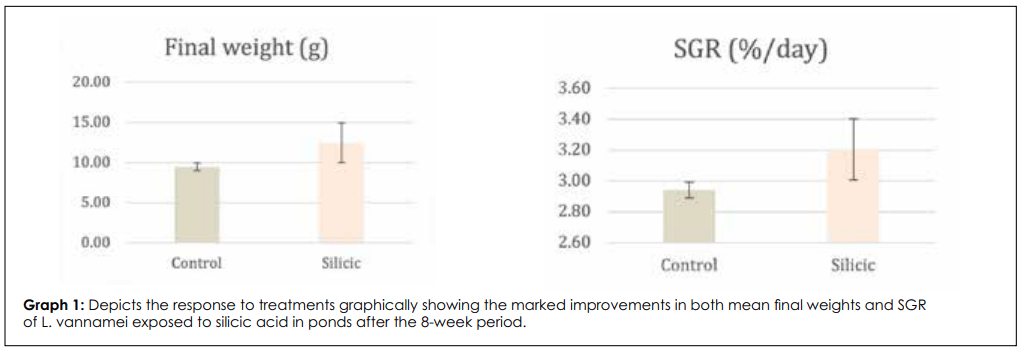
The results of the growth and feed performance of shrimp subjected to the experimental treatments are displayed in tables 1&2. These show a very significant elevation in total biomass and mean body weight of animals at the end of the trial period (mean weight of control 9.48, and 12.49 for the silicic acid product). The SGR (Specific Growth Rate) defined as the mean daily live weight gain (%/day) also reflects the much higher and significant effect of silicic acid addition to rearing ponds.
Protein Efficiency Ratio (PER) is a measurement of gain of biomass per unit of protein intake and reflects the conversion efficiency of dietary protein conversion in gross terms. It is evident that from Table 1 there is a marked increase in PER showing that silicic acid has enhanced the protein conversion from 1.42 to 1.76. Survival levels of L. Vannamei increased by 11.5% and was deemed significant.
Table 3 presents the data obtained of the effect of the Silicic acid product on the whole-body composition of the shrimp.
Total body protein increased from 18.31% in the control group to 20.02% for the silicic acid treatment shrimp. This is a significant elevation of 9.33% elevation. Whole-body fat increased from 0.44 to 0.76% for the silicic acid shrimp group (an increase in fat content of 72.7%).

Graph 2 shows the clear elevation in performance of key feed utilisation parameters indicative of increased feed efficiency for bioconversion and protein efficiency relative to gain (FCR & PER). This is confirmed by the direct measurement of the protein retention as APNU (Apparent Protein Utilisation) in Table 1 & Graph 3.



This calculation is based on the final body composition and the initial body content of protein using the N*6.25 conversion factor and relative to protein intake during the 8-week assessment. We see that the control group shrimp retain 27.2% of dietary protein compared to a significant elevation to 36.4% for the group exposed to the silicic acid product.
In Graph 4, we can observe a significant increase in shrimp survival rate under the ideal and stable conditions of the farm. It should be noted that no disease state was identified throughout the trial and all shrimp were healthy. This is especially important that even healthy shrimp can benefit in terms of reduced mortality with silicic acid addition to their environment under normal conditions and husbandry.
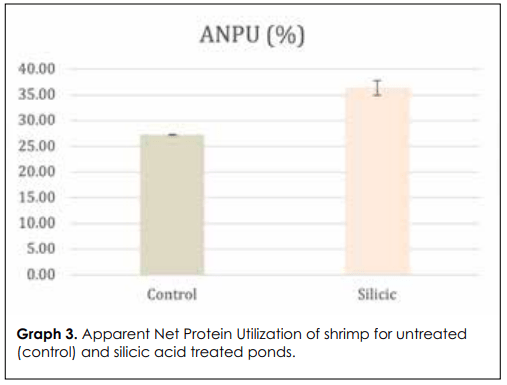
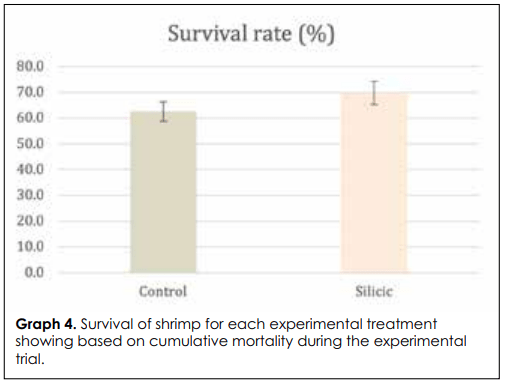
For several of the silicon compounds on the market only the (patented) stabilised silicic acid is bioavailable and bioactive for biological systems. Silicic acid molecules are water-soluble and easily absorbable by almost any animal including fishes and shrimps and thus augmenting their mineral accumulation during maintenance and growth. Silicic acid, in its bioavailable speciation, is a crucial element for the growth and support of a healthy immune system in aquatic and terrestrial organisms.
When supplemental stabilised silicic acid is added to ponds or lakes, aquatic animals and plants show enhanced performance and feed utilisation efficiency. This can be via natural uptake of bioavailable silicon (silicic acid) into a complex food web that contributes more natural food for shrimp as well as the feeding of commercial formulated diets.
This extra source of nutrition will greatly improve the FCR and protein assimilation as the present results have shown. Other experiments have confirmed that diatoms and various types of zooplankton benefit from bioavailable silicon (silicic acid) favourably to generate diatoms and zooplankton populations and biofloc mass in suspension.
Additionally, due to the higher growth rate of diatoms, the water quality will improve and enabling higher shrimp growth capacity. The efficacy of the benefits of silicic acid for aquaculture is much higher compared to the results of other silicon compounds since all other silicon compounds are not bioavailable. This is well documented in agriculture.
The economic and fiscal benefits of using the silicic acid commercial product SiliFish® are shown in Table 2. There is a clear profit margin based on economical values such as Feed Conversion per Gain (FCG, USD/kg of shrimp). By adding silicic acid to shrimp rearing ponds under these conditions, the cost of feed for gain could be reduced by some 30 cents per kg of biomass. For a 10-tonne shrimp farm this could equate to a US$3000 profit for the farmer.
Significantly improving shrimp performance
The value of this commercial silicic acid (bioavailable silicon) product SiliFish® to growers, farmers, and the agri-tech industry at large, requires more education to disseminate this knowledge to a global level where intensive shrimp are cultured at an everexpanding rate.
This specific and independently controlled study in Thailand clearly demonstrated that SiliFish® can significantly improve shrimp performance as measured by standard aquaculture metrics. These results are consistent with previous studies on the Pacific Whiteleg shrimp in India and Vietnam, which enhances the reliability of the results of this study.
It should be noted that the results of this study were recorded under optimum farm conditions of husbandry and environmental standards of practice. The product would show considerable advantages in enhancing shrimp production under less than favourable conditions by improving and stabilising water quality and external nutrition sources from primary and secondary trophic systems and particularly for maintaining a biofloc rich environment.
Further research is needed to validate the use of the product under wider production conditions and different types of facilities such as in closed tanks, raceways, and various salinities. Research is also required to obtain more data and supportive evidence on shrimp health and their physiological/ metabolic responses to silicic acid addition to the culture systems.
The major problems may concern the description and nonclassification of silicon type products by agricultural agencies, customs, and other regulatory authorities. The results presented in this report confirm its undeniable value for the tropical shrimp industries and will greatly assist to provide evidence of efficacy for its use in practice.

 Tiếng Việt
Tiếng Việt Indonesia
Indonesia